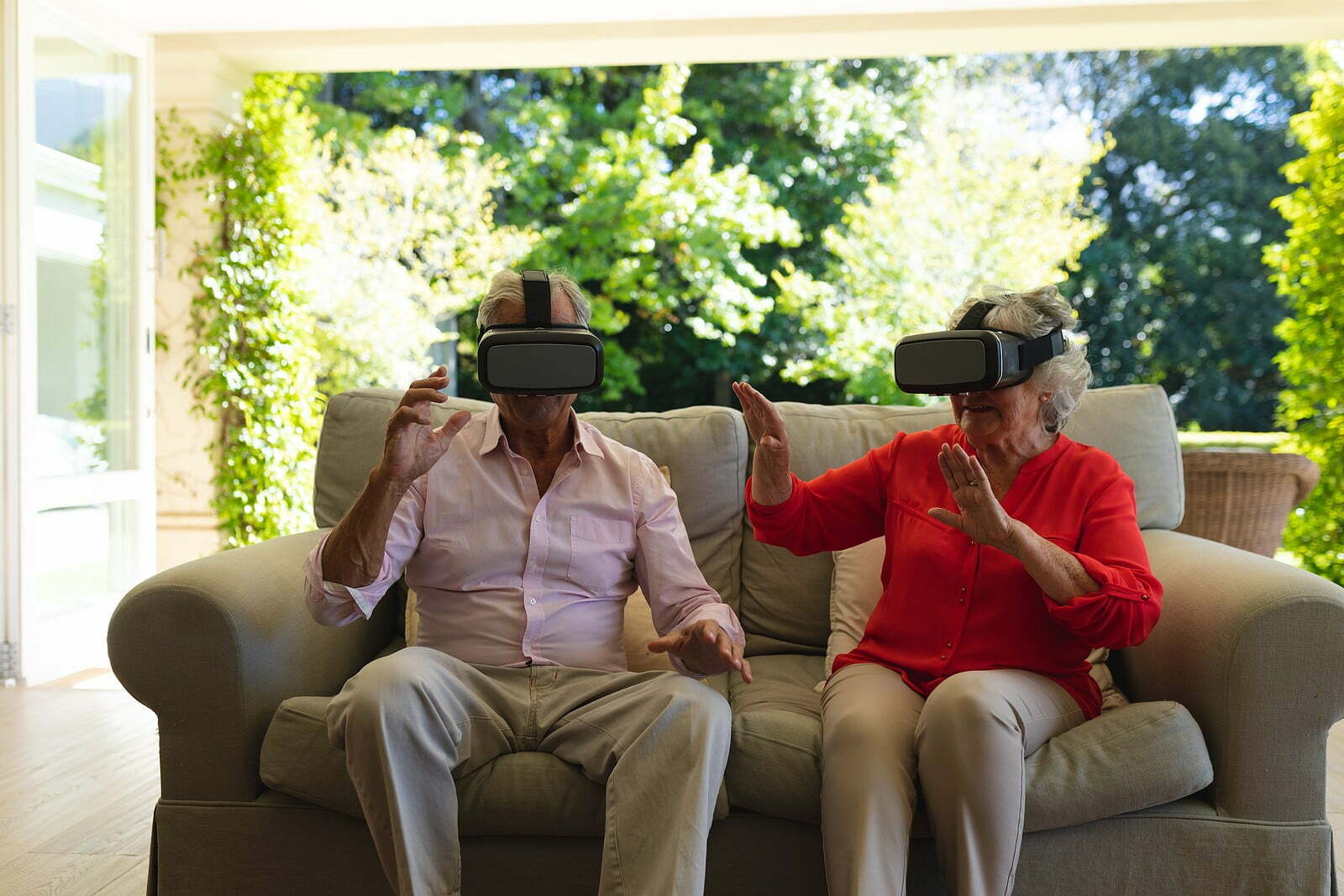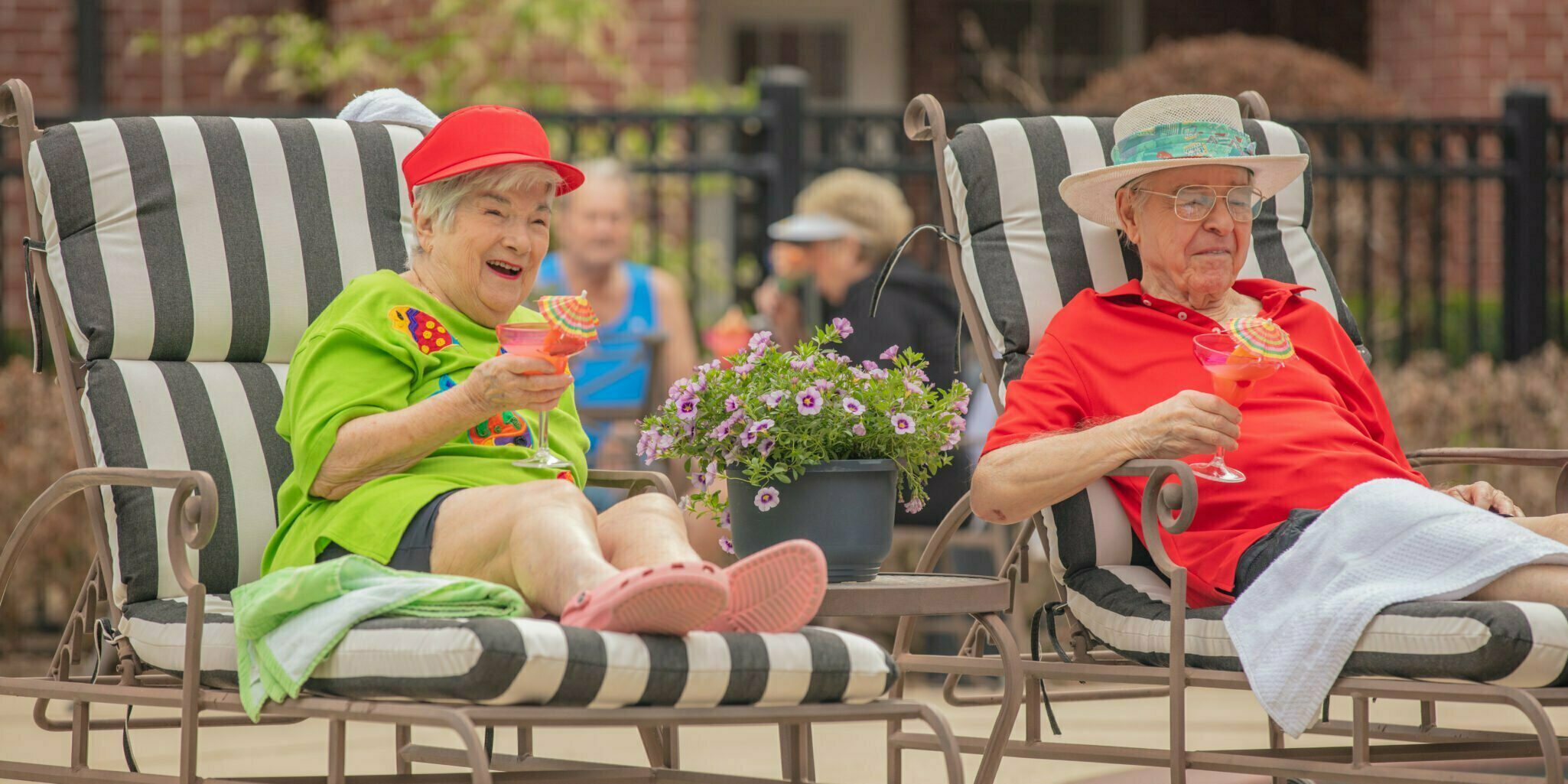
Wearable Technology for Seniors
Wearable technology isn’t just for millennials or the Gen Z set. Adult children, for example, are employing wearable technology specifically for seniors to help their parents age in place in their own homes.
The devices do everything from tracking seniors’ heart rates and blood pressure to sending fall detection alerts if the wearer falls. They’re also being used by independent living and assisted living residents in senior living community settings to provide medication reminders and offer 24-hour assistance, giving seniors more independence and control over their health.
The technology is becoming so popular that one in three Americans sports some kind of wearable device. And the wearable technology market is projected to be a $95 billion industry by 2026, with some of the major players being Nike, Apple, Fitbit and Garmin.
What is Wearable Technology?
You’d think earbuds could be categorized as wearable technology — it’s a technological gadget you can wear. But that’s not quite accurate.
Wearable technology incorporates smart sensors that measure the wearer’s personal data, whether that’s heart rate, step count, sleep patterns or blood sugar. These wearable devices, also referred to as wearables, compute data from day-to-day activities; they can be used by doctors to improve diagnosis or treatment, or as a medical device to alert someone in the event of an adverse health situation.
While you might picture most wearables worn on the wrist, there are actually wearable gadgets that can be worn all over the body. Other options include rings, necklaces, headbands and even shoe insoles.
4 Types of Wearable Technology for Seniors
1. Smart Watches
Smart watches are basically mini-computers on your wrist. They allow you to check email, make calls, and track your heart rate and step count. Some let you browse the internet on their touch screens and offer different apps.
The Apple Watch 6 has a built-in echocardiogram, along with personalized health metrics and notifications to encourage you to keep moving throughout the day. It can also notify emergency responders if it detects a sudden fall or even an irregular heart rate.
Fitbit offers both fitness trackers and watches, which track your activity, sleep, heart rate and other metrics. There are multiple models, so you can easily find one that works for your needs.
2. Headwear
These are two main kinds of headwear that are slowly gaining use among older adults: smart hats and virtual reality (VR)headsets.
Smart hats can take the place of smartwatches by measuring heart rate and other vital signs. Runners have been using them for years, but older adults are starting to wear them because they don’t want or use all the smartwatch features. Some users also prefer smart hats because they can go hours longer than smartwatches before they need to be recharged.
Senior living communities are already using VR headsets like the Oculus Rift. For assisted living or skilled nursing residents, VR headsets can take them hiking on a national park trail, on a deep-sea boat fishing for marlin, or flying over the Grand Canyon, all without ever leaving the community. Older adults who have a VR experience report being less socially isolated, being less likely to show signs of depression, experiencing positive effects more frequently, and feeling better about their overall well-being.
3. Smart Jewelry
Remember the “I’ve fallen and I can’t get up” commercials? It’s become something of a catchphrase, but the fall detection pendant is an early example of wearable tech.
Today there are all kinds of wearable “panic devices” ideal for people who want an unobtrusive way to get help if they need it. A company called InvisaWear makes jewelry like pendants that will alert 911 even if you can’t speak or don’t know where you are.
4. Implantables
These aren’t as easy to remove as wearables because they’re surgically implanted under your skin. However, they can be life-saving. For example, glucose monitoring systems implanted on the arm or stomach constantly measure blood glucose levels, while implanted insulin pumps deliver the right amount of insulin at the moment you need it. Other examples include cochlear implants and neuro prosthetics.
You might already be wearing a smartwatch — but do you have access to a fitness center and wellness programs that help you stay healthy and active? Maybe you have an implanted glucose monitor — but do you have a culinary team who knows your dietary needs and prepares delicious, nutritious meals daily for you? You can enjoy these things and so much more at The Buckingham, Houston’s premier Life Care community.
Use your smartwatch right now to give us a call at 713-309-6934, or contact us. We’d love to hear from you.

